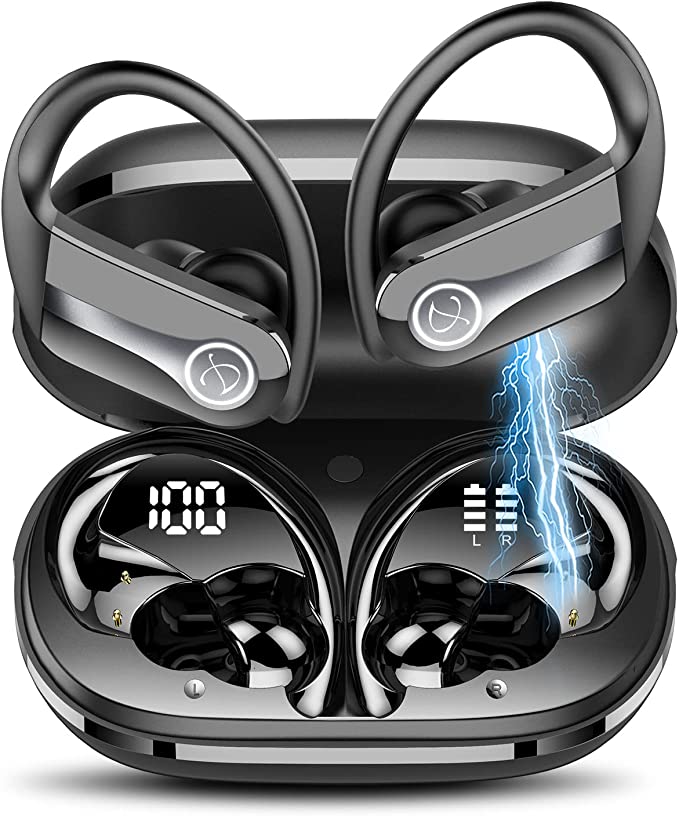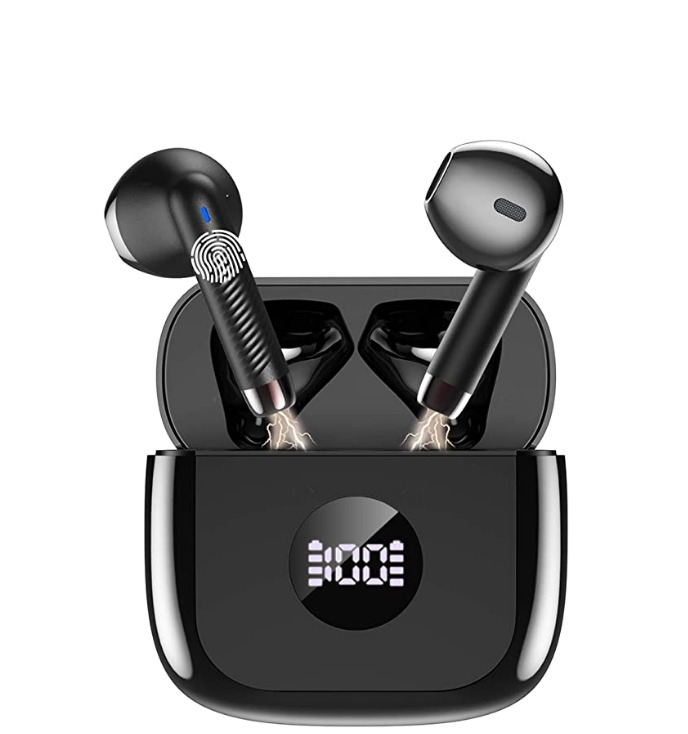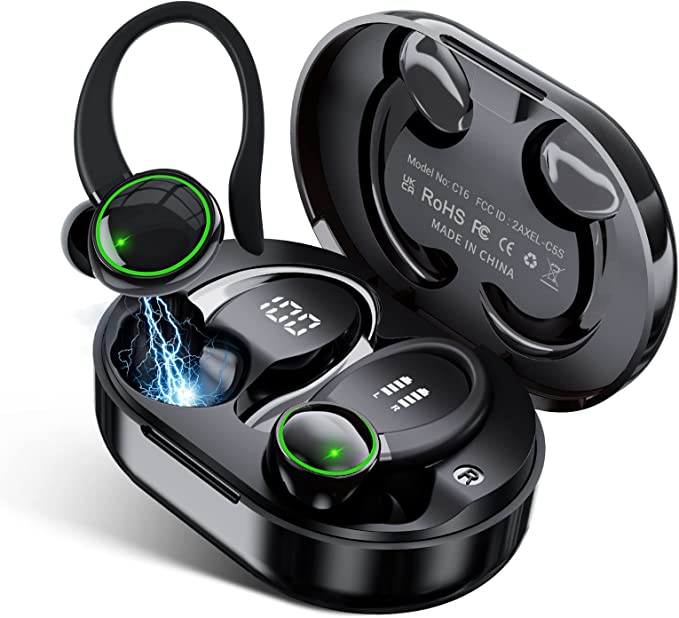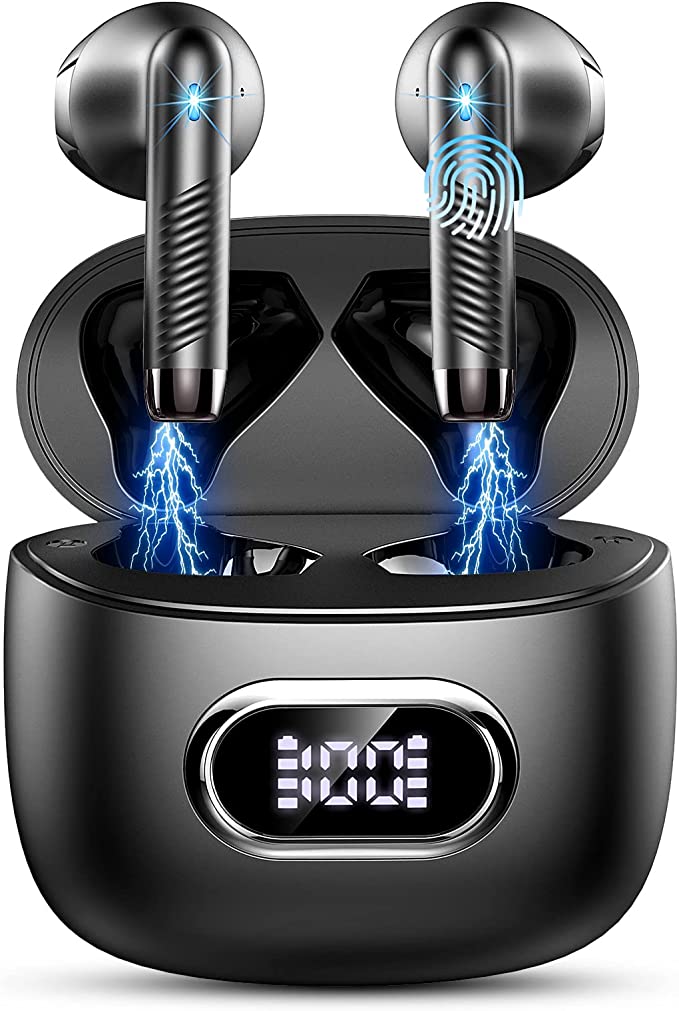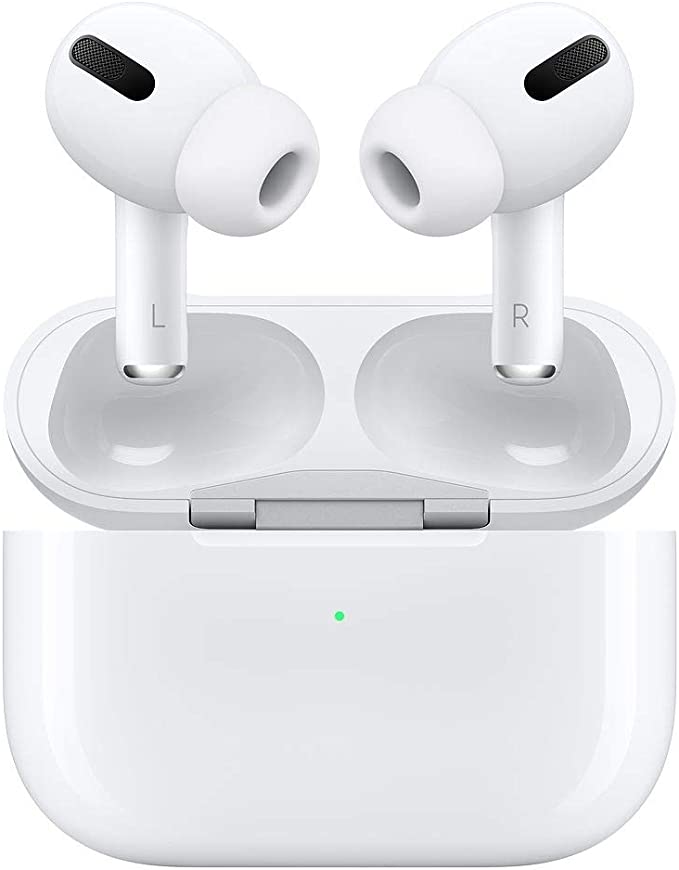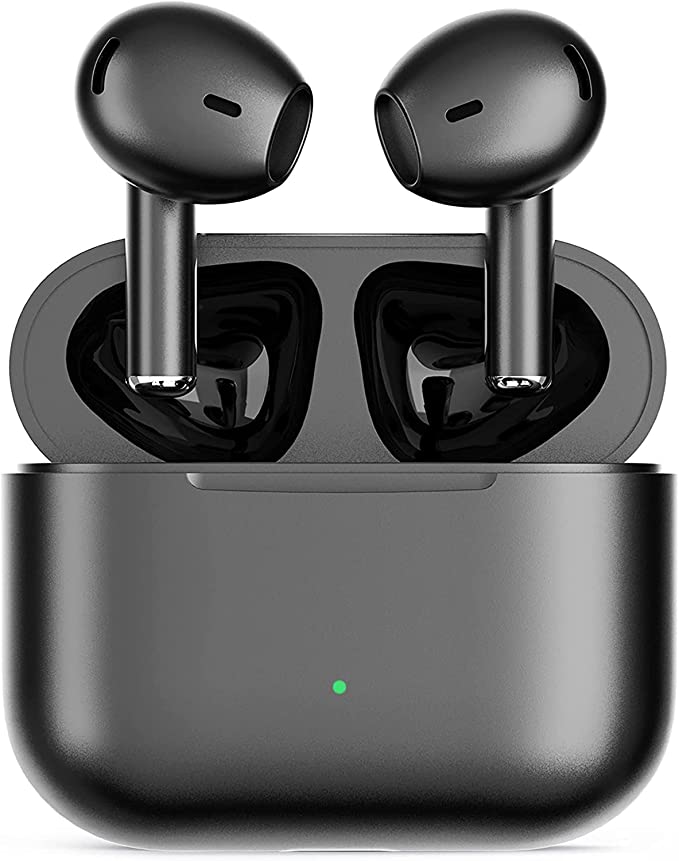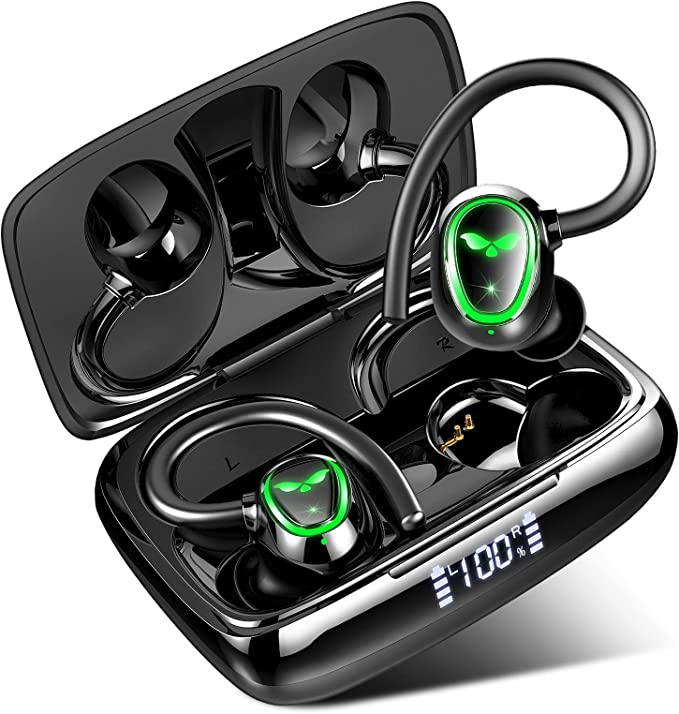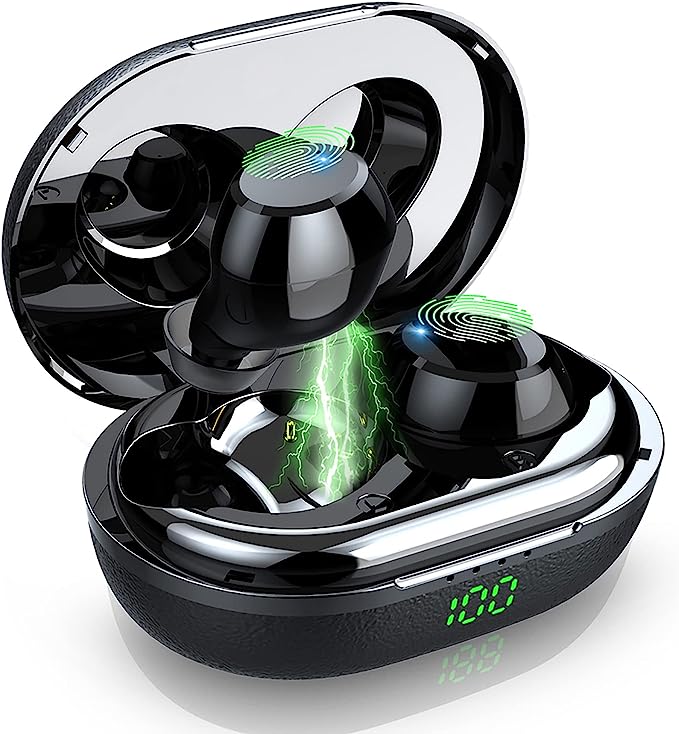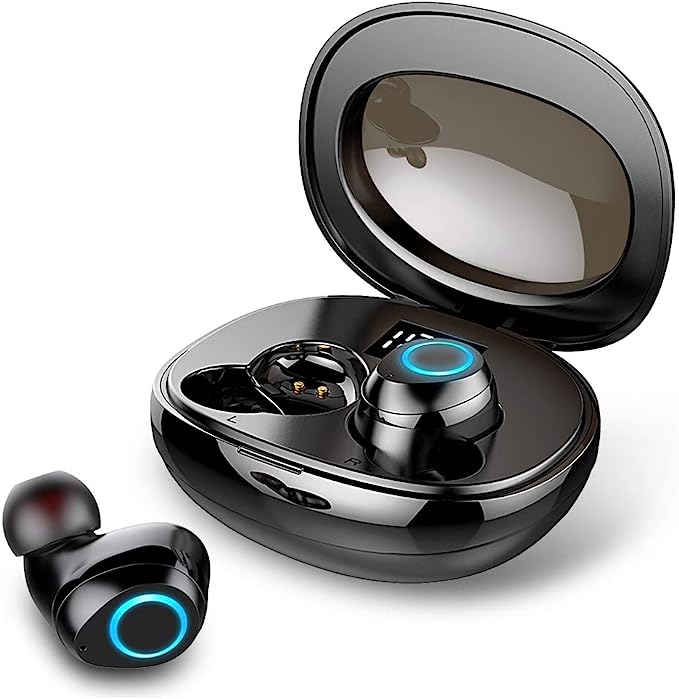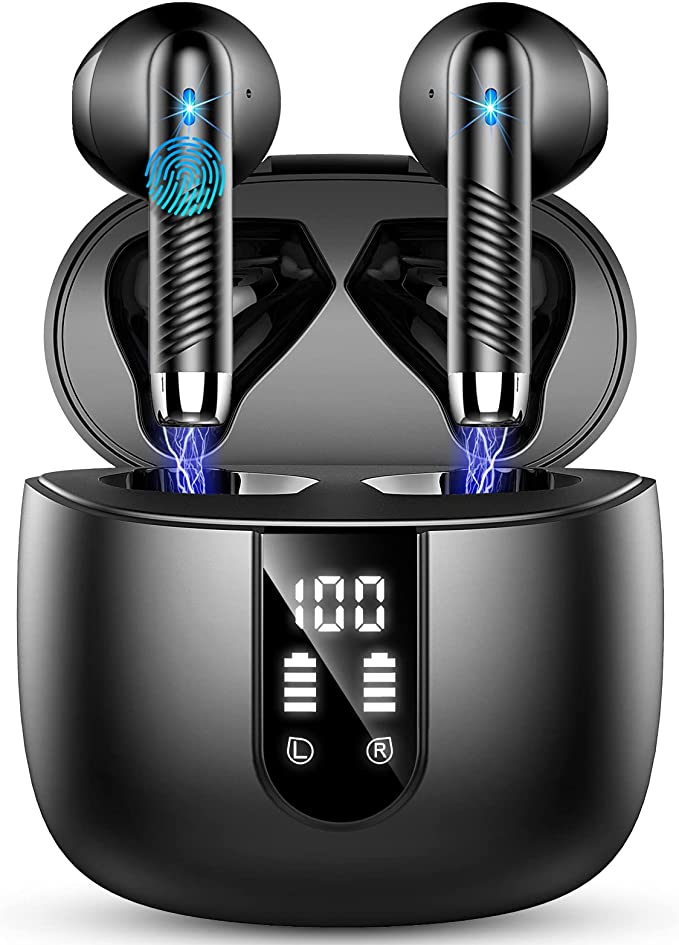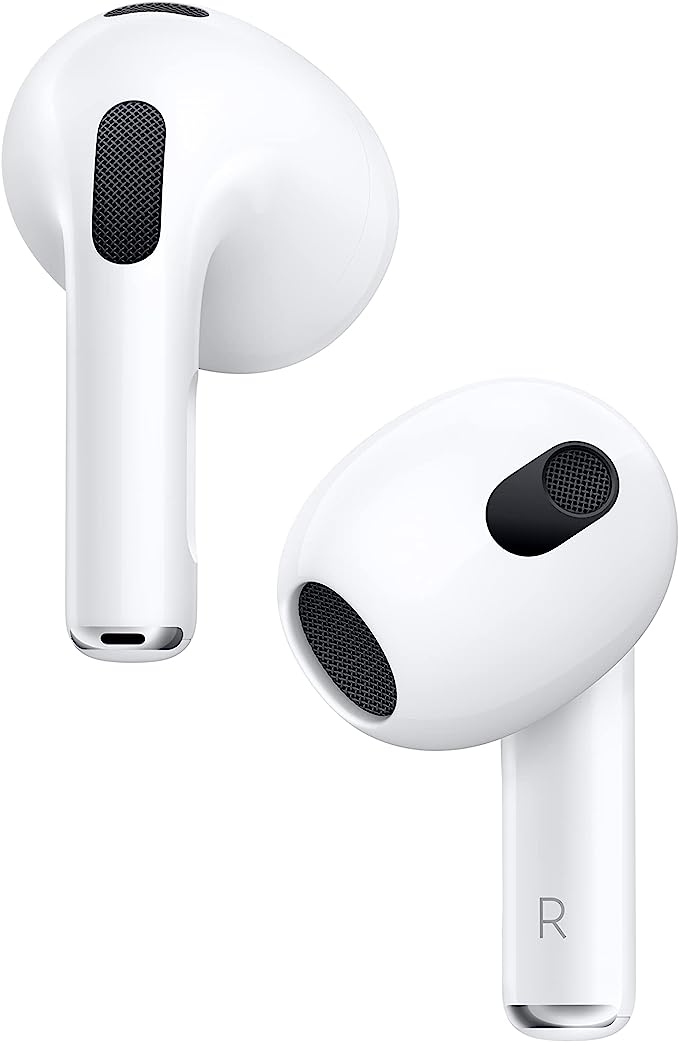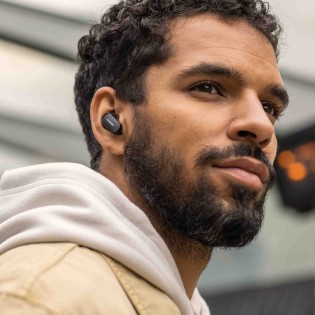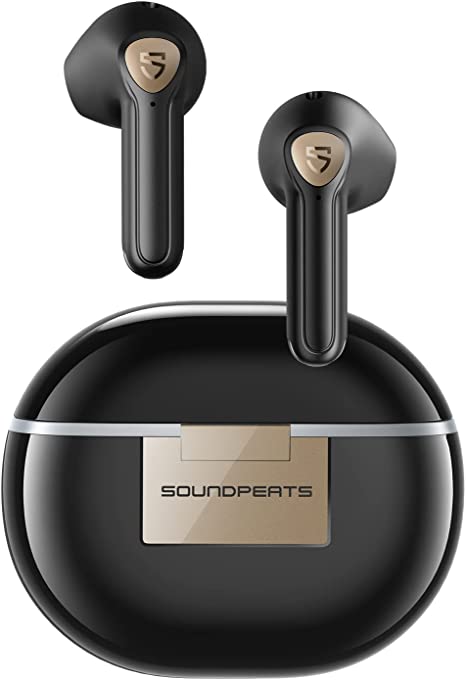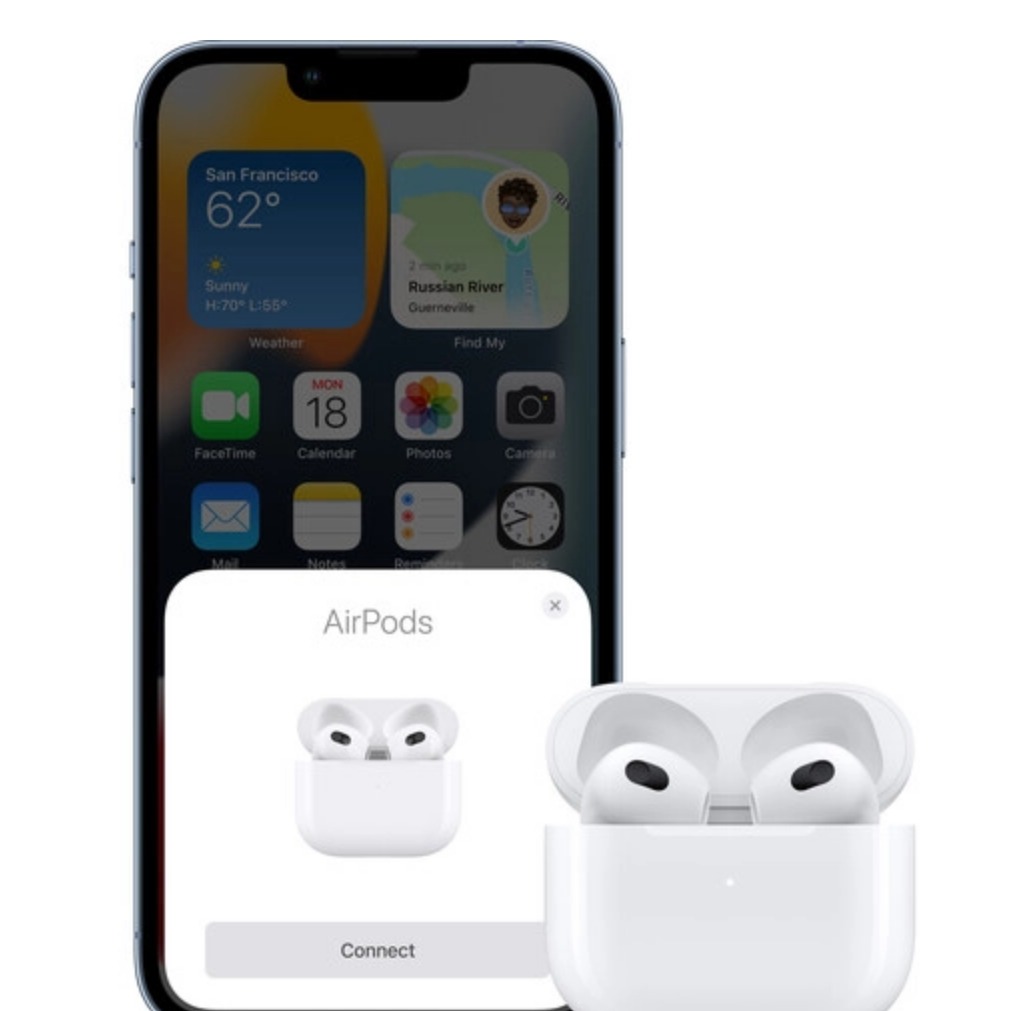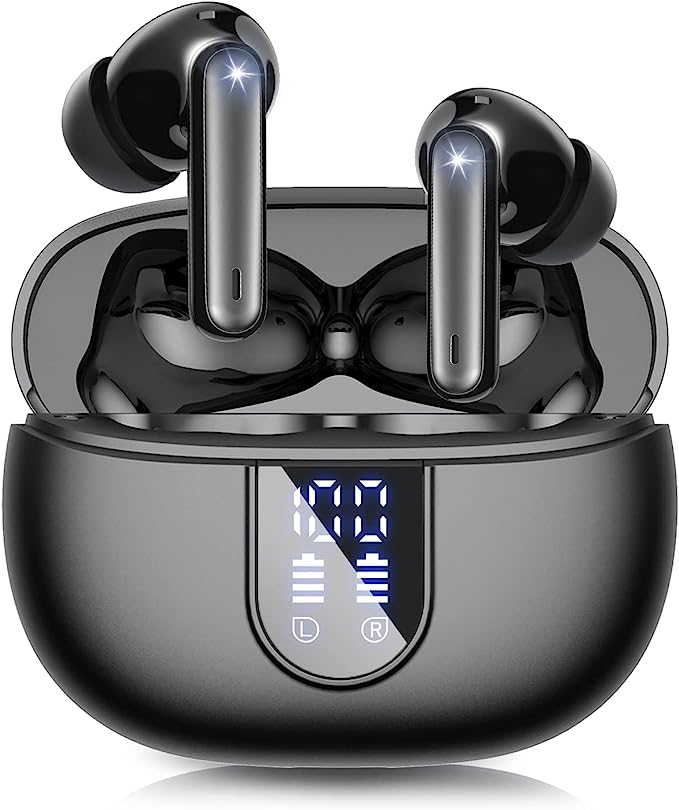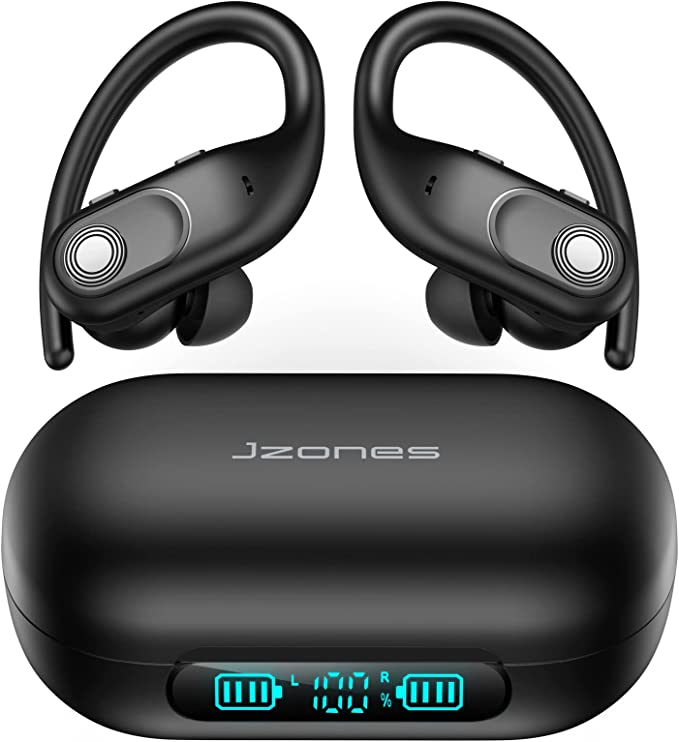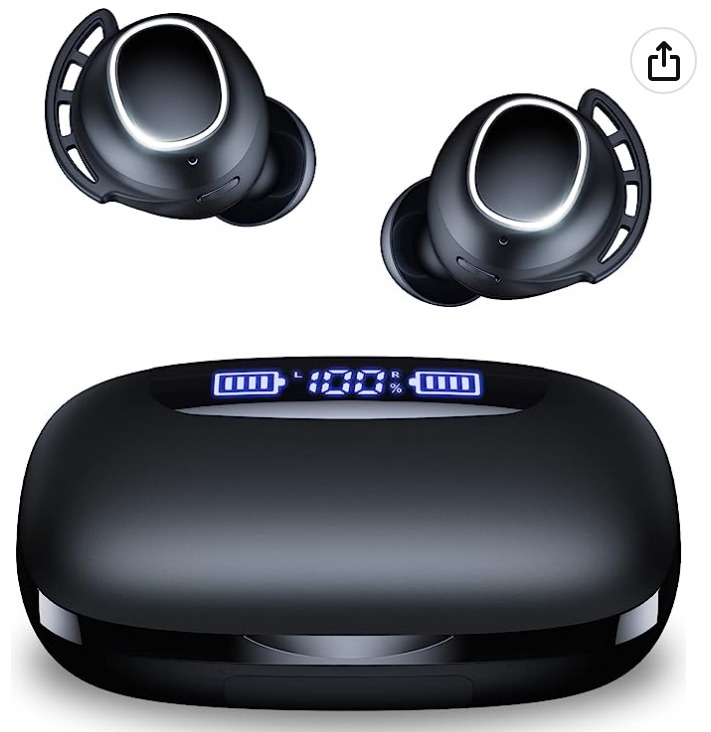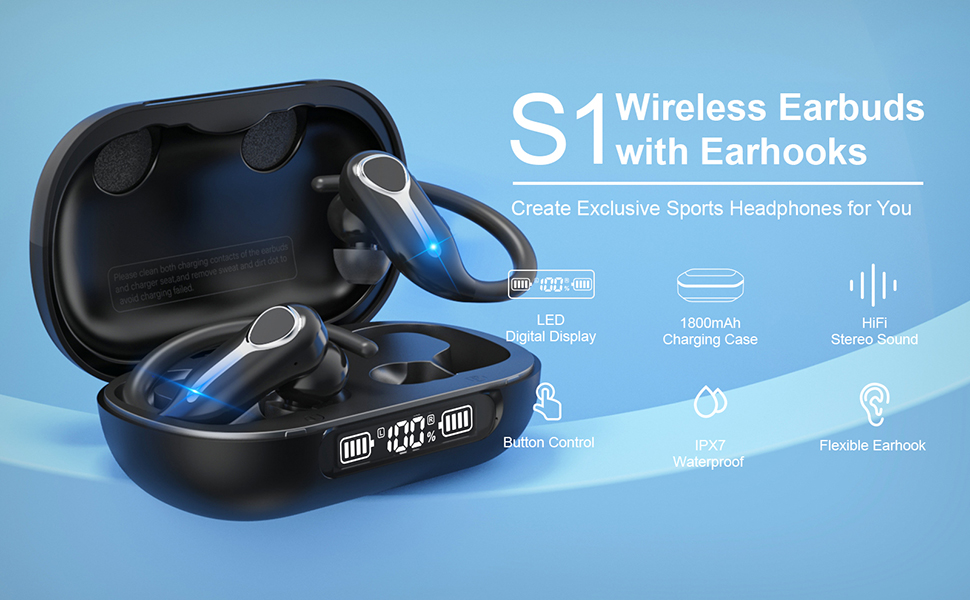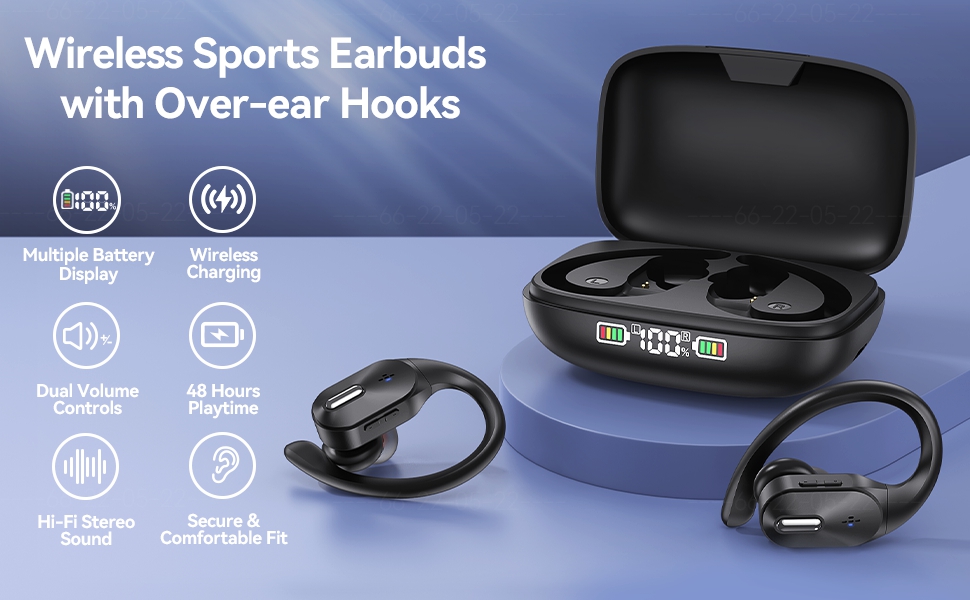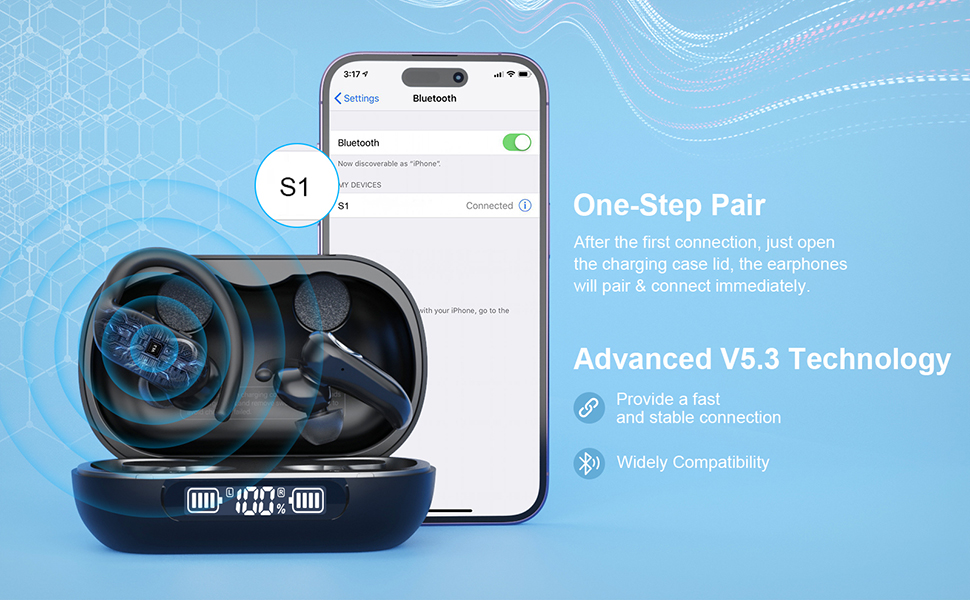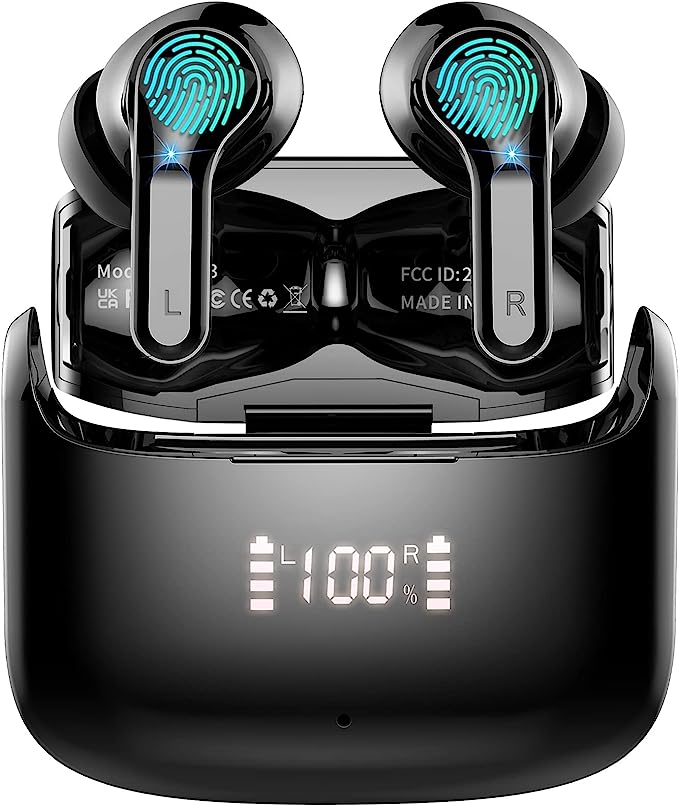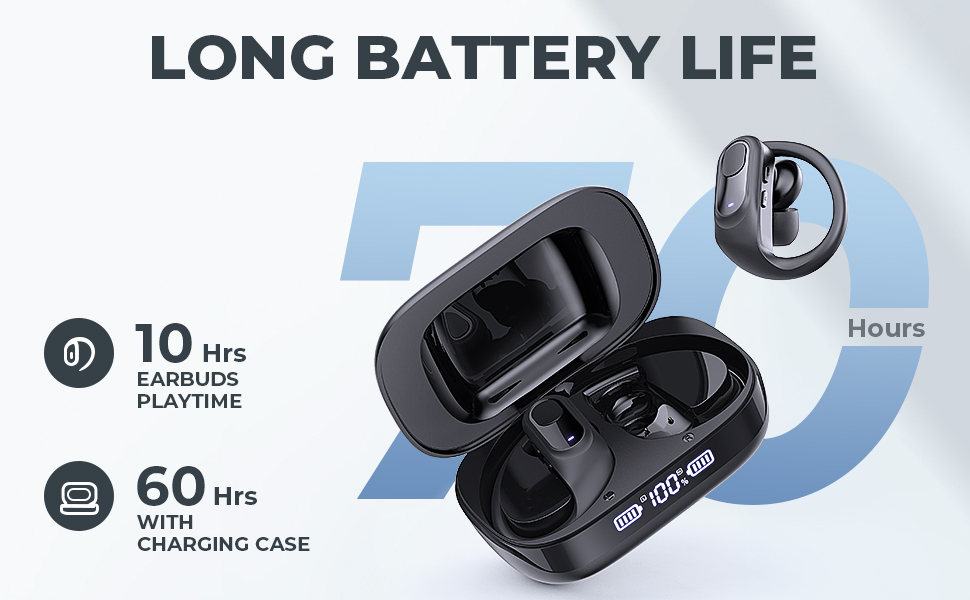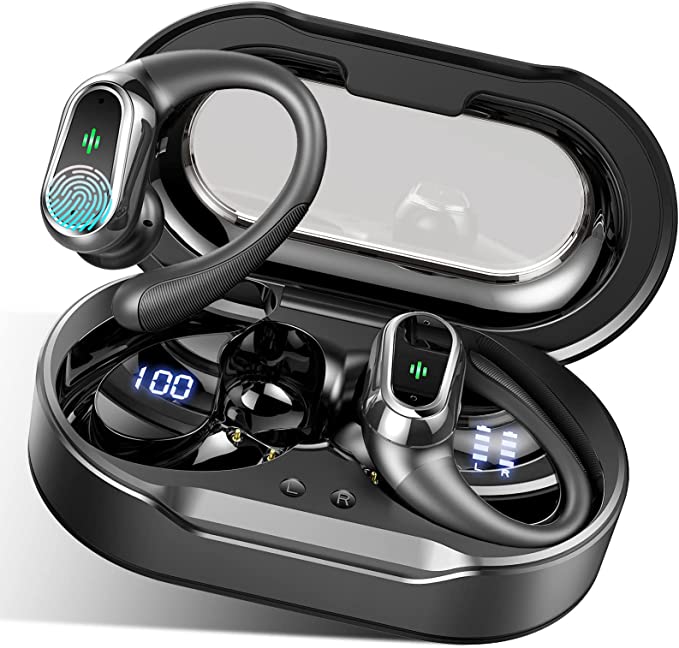DOBOPO Q13 Wireless Earbuds: The Science Behind Untethered Audio and All-Weather Resilience
Update on May 15, 2025, 1:39 p.m.
In our bustling world, saturated with a cacophony of sounds, the desire for a personal oasis of audio, a perfectly curated soundtrack to our lives, has never been stronger. We crave that seamless transition from a work call to a motivating workout playlist, or the ability to lose ourselves in an audiobook during a crowded commute – all without the frustrating dance of tangled wires. Wireless earbuds have emerged as tiny titans of technology, promising just that: freedom, immersion, and convenience. But have you ever paused to consider the intricate science and engineering packed into these discreet devices?
Today, we’ll embark on such an exploration. Think of me not just as a writer, but as your guide, an audio technology engineer fascinated by how these marvels come to be. Our “specimen” for this journey is the DOBOPO Q13 Wireless Earbuds – a [2023 New] model that, according to its product information, aims to bundle several contemporary features. This isn’t a product review in the traditional sense; rather, it’s an opportunity to unravel the scientific principles that make devices like the Q13 tick, helping us appreciate the unseen symphony of technology that plays out in our ears every day.

The Invisible Handshake: Understanding Bluetooth 5.2
One of the first liberating experiences that wireless earbuds like the DOPOPO Q13 offer is, quite simply, the absence of physical tethers. This freedom is primarily orchestrated by Bluetooth technology, and the Q13 specifically lists Bluetooth 5.2 connectivity.
So, what is Bluetooth, really? Imagine it as a highly sophisticated, invisible handshake between your earbuds and your phone or other audio sources. It’s a wireless communication standard that uses short-range radio waves, typically in the 2.4 GHz spectrum, to transmit data. Think of it like a very precise, low-power walkie-talkie system dedicated to your personal devices.
The “5.2” isn’t just an arbitrary number; it signifies a iteration in the Bluetooth standard, one that generally builds upon its predecessors with enhancements in areas like connection stability, data transfer speed, and power efficiency. While the specifics can be quite technical, for the end-user, this often translates to a more robust and reliable audio stream, fewer annoying dropouts when you put your phone in your back pocket, and potentially a longer listening session before the earbuds themselves need a recharge. The Q13’s product description also mentions an “HD Mic.” A stable Bluetooth connection like that offered by version 5.2 is crucial for transmitting your voice data clearly during calls, aiming for conversations that are crisp and intelligible, not muffled or broken.
The journey of Bluetooth itself is a fascinating piece of tech history, evolving from a cable-replacement technology in the late 1990s (initially conceived by Ericsson) to the sophisticated audio streaming and data transfer protocol it is today. Each version has unlocked new capabilities. For a Q13 user, this advanced iteration means that initial pairing should be relatively seamless, and the connection should, in theory, remain steadfast whether you’re navigating a busy city street or pushing through a new personal best at the gym.

Crafting Your Private Concert: Deep Bass and the Art of Isolation
Once that invisible handshake is established, the next crucial element is, of course, the sound itself. The DOPOPO Q13 earbuds are described as “In Ear” and promise “Deep Bass,” features that directly impact your auditory experience and aim to create a more immersive private concert.
The “In Ear” form factor is significant. Unlike on-ear or over-ear headphones, these earbuds are designed to be inserted directly into your ear canal. This proximity to your eardrum can inherently enhance the perception of bass frequencies and provide a degree of natural sound isolation. The user ratings provided with the product information indicate a score of 4.4 out of 5 for sound quality, suggesting a generally positive reception to its audio output.
Now, let’s talk about “Deep Bass.” In the world of acoustics, sound is essentially vibrations traveling through a medium, characterized by frequency (pitch) and amplitude (loudness). Bass notes are low-frequency sounds. To reproduce these effectively in a tiny earbud, the miniature speaker drivers inside – the components that actually vibrate to create sound – need to be capable of moving enough air at these lower frequencies. While the product description doesn’t detail the specific driver technology in the Q13, the “Deep Bass” claim suggests they are tuned or designed to give more presence and richness to the lower end of the audio spectrum. This doesn’t necessarily mean a bass that overwhelms everything else, but rather one that adds warmth, depth, and impact to your music, from the thrum of a bass guitar to the rumble of a cinematic explosion.
Complementing the audio output is the “Bluetooth Earbud in Ear Noise Cancelling” feature. It’s important to understand that, in this context and for most earbuds of this type (unless explicitly stated as Active Noise Cancellation or ANC), this primarily refers to passive noise cancellation. Think of it like wearing high-quality earplugs that also happen to play your favorite tunes. By creating a snug seal within your ear canal, the earbuds physically block out a significant amount of ambient sound from your surroundings. This acoustic isolation is a direct benefit of the in-ear design. Users of the Q13 rated its noise cancellation capabilities at 4.1 out of 5, indicating a noticeable reduction in external noise for many. This passive approach differs from ANC, which uses microphones to detect external noise and then generates opposing sound waves to actively cancel it out – a more complex and typically more expensive technology.
For the Q13 user, this combination of potentially rich bass and passive noise isolation means a more engaging listening experience. Imagine being on a noisy train; the seal of the earbuds helps to mute the clatter of the tracks and the chatter of fellow commuters, allowing the nuances of your music or podcast to come through more clearly. Or, in an open-plan office, it can help create a much-needed bubble of focus.

Braving the Elements: The Resilience of IP7 Waterproofing
Life isn’t always lived in a quiet, dry room. Whether it’s an unexpected downpour during your evening jog, an intense workout session that leaves you drenched in sweat, or even an accidental fumble near a sink, our electronics often face the threat of moisture. The DOPOPO Q13 earbuds address this with an “IP7 Waterproof” rating.
Let’s decode that “IP7.” The “IP” stands for Ingress Protection, and it’s part of an international standard (IEC 60529) used to classify the degree of protection that an electrical enclosure provides against the intrusion of foreign objects (like dust) and, crucially here, moisture. The first digit after IP relates to solid particle protection, and the second to liquid protection. While the Q13 product information states “IP7,” in consumer electronics, this typically implies an “IPX7” rating when the solid particle protection isn’t specified or tested to a particular level.
An IPX7 rating is quite robust. It means the device is protected against the effects of temporary immersion in water under standardized conditions: up to 1 meter (about 3.3 feet) of submersion for a maximum of 30 minutes. To put this into perspective, it’s a level of water resistance you might find on some sport watches. It doesn’t mean you should go swimming with them, but it does offer significant peace of mind against common water-related mishaps.
How is this achieved? The product description mentions “nano-coated waterproof material.” Nano-coatings are fascinating examples of materials science at a microscopic level. These are ultra-thin layers, often just a few nanometers thick, applied to the surfaces of the earbuds (and potentially internal components). This coating creates a hydrophobic (water-repelling) surface. Instead of water seeping into crevices or damaging sensitive electronics, it tends to bead up and roll off, much like water on a freshly waxed car or a lotus leaf.
For a DOPOBO Q13 user, this IP7 rating, backed by nano-coating technology, translates directly to versatility and durability. It means you can likely wear them confidently during a vigorous gym session without worrying about sweat damage. It means a sudden rain shower isn’t a cause for panic. It adds a layer of resilience, allowing your music and calls to accompany you through more of life’s varied (and sometimes wet) scenarios.
The Unending Encore: Powering Through with 35-Hour Playtime
The liberation of wireless technology comes with a fundamental dependency: battery power. There’s little joy in untethered audio if you’re constantly anxious about your earbuds dying mid-song or mid-call. The DOPOPO Q13 addresses this with a stated “35H Wireless Headphones” capability.
This 35-hour figure almost certainly refers to the total listening time achievable with fully charged earbuds combined with multiple recharges from their accompanying “Fast Charging Case.” The earbuds themselves will hold a charge for a certain number of hours (a figure often specified separately, though not in this particular product overview). Once depleted, they can be placed back into the charging case, which acts as a portable power bank, to be topped up. The case itself then holds enough energy for several such recharge cycles.
At the heart of this endurance are modern Lithium-ion (Li-ion) batteries. This battery chemistry has revolutionized portable electronics due to its high energy density (packing a lot of power into a small space), relatively slow self-discharge rate, and light weight – all crucial attributes for compact devices like earbuds and their cases. The mention of a “Fast Charging Case” implies that the case itself can be recharged relatively quickly when it runs out of power, and the inclusion of a “Type-C Charging Cable” aligns with current connectivity standards, offering a more robust and often faster charging experience for the case compared to older micro-USB ports. The user feedback provided with the Q13 information gives its battery life a rating of 3.9 out of 5, suggesting users generally find the endurance satisfactory for their needs.
For the Q13 user, this 35-hour total playtime (a common benchmark in this product category) offers significant convenience. It could mean getting through several days of commuting, multiple long workout sessions, or even a long-haul flight with layovers without needing to hunt for a wall socket. It’s about reducing that “battery anxiety” and ensuring your audio companion is ready when you are, for more of life’s encores.

Intuition at Your Fingertips: The Simplicity of Smart Touch Control
In our increasingly screen-dominated lives, the ability to interact with our devices intuitively and without unnecessary fumbling is highly valued. The DOPOPO Q13 earbuds feature “Smart Touch Control,” moving beyond physical buttons to a more streamlined mode of operation.
This technology typically relies on capacitive touch sensors integrated into the flat outer surface of one or both earbuds. How does this work, in simple terms? Your body, particularly your skin, has natural electrical capacitance. When your fingertip touches or even comes very close to the sensor on the earbud, it changes the local electrostatic field. The sensor detects this change and interprets it as a touch command. It’s a similar principle to how most smartphone touchscreens work, but miniaturized and adapted for a different kind of interaction.
The Q13’s product information states that these touch controls can manage a variety of functions: “music switch, volume adjustment, phone calls, voice assistant, etc.” This means a user could, for example, tap an earbud to play or pause music, swipe to adjust the volume, double-tap to skip to the next track, or perhaps press and hold to activate their phone’s voice assistant (like Siri or Google Assistant) – all without needing to pull their phone out of their pocket or bag.
For the user, the benefit is clear: effortless and discreet control. Imagine you’re out for a run and want to increase the volume of your motivating playlist – a simple tap or swipe on your earbud is far more convenient than trying to operate your phone while in motion. Or perhaps you’re cooking, and a call comes in; a quick tap to answer keeps your hands free. Smart touch control aims to make these everyday interactions smoother and more integrated into the flow of your activities.

Concluding Thoughts: The Symphony of Integrated Technology
As we’ve journeyed through the key features attributed to the DOPOPO Q13 Wireless Earbuds, it becomes clear that these small devices are more than just conduits for sound; they are compact showcases of elegantly integrated technology. It’s not merely one standout feature, but the harmonious interplay of Bluetooth 5.2 for stable wireless connectivity, the acoustic design choices aiming for deep bass and immersive isolation, the materials science enabling IP7 waterproofing, the efficient battery systems providing extended playtime, and the intuitive touch controls that together craft the modern wireless audio experience.
The DOPOPO Q13, based on its described specifications, serves as an accessible example of how complex scientific principles can be packaged into user-friendly consumer electronics. While the product information notes it is “Currently unavailable,” its listed features reflect common trends in the personal audio market, striving to deliver convenience, resilience, and rich sound. The “Climate Pledge Friendly” label also suggests a nod towards more sustainable product considerations, an increasingly important aspect for many consumers.
Ultimately, the science embedded in devices like these wireless earbuds works quietly in the background, aiming to enhance our daily lives, enrich our personal soundscapes, and allow us to connect, listen, and move through the world with a little more freedom and a lot more music. The ongoing evolution of these technologies promises even more exciting developments, continuing to refine how we interact with sound and the world around us.
